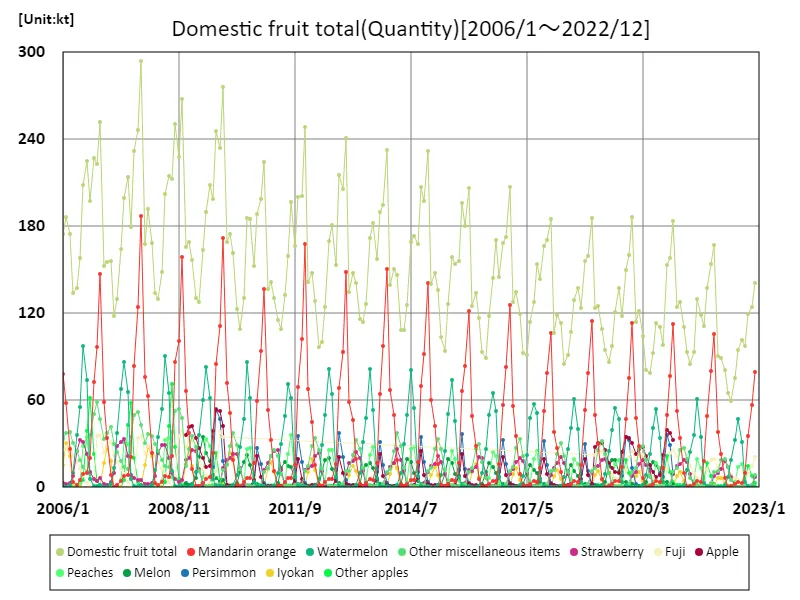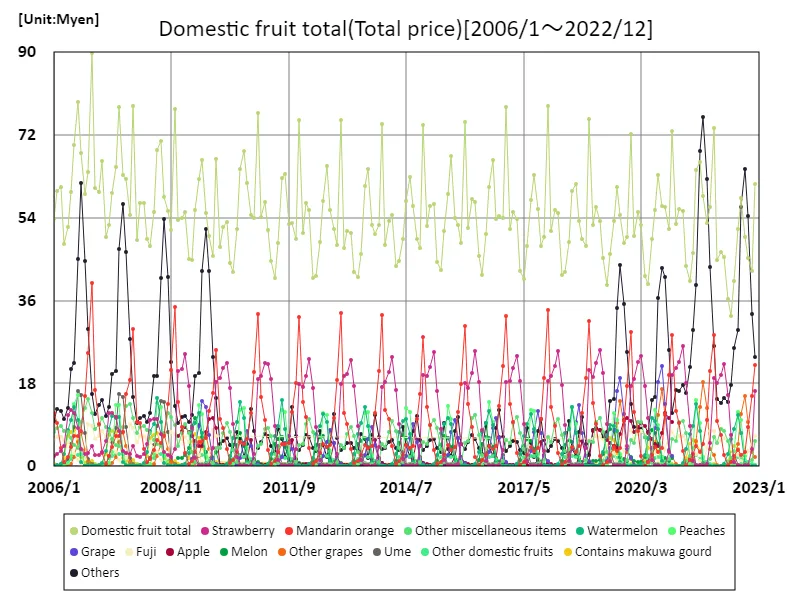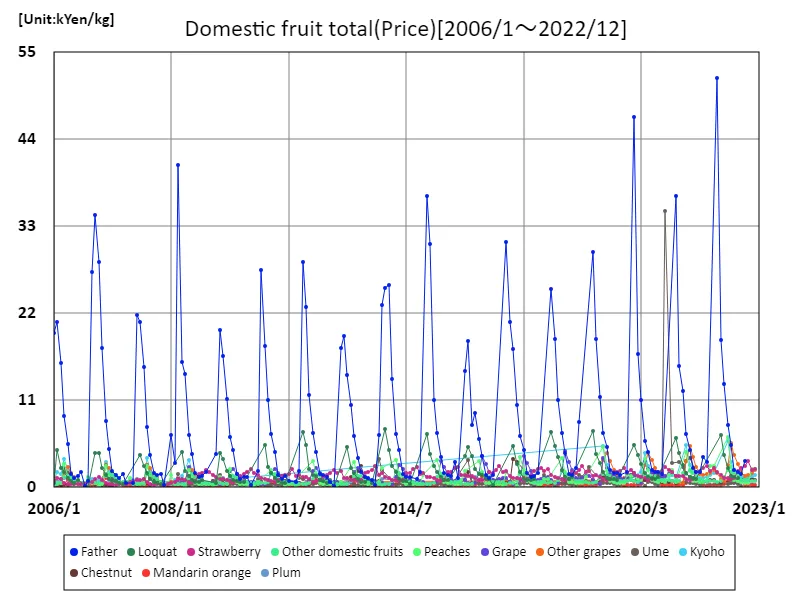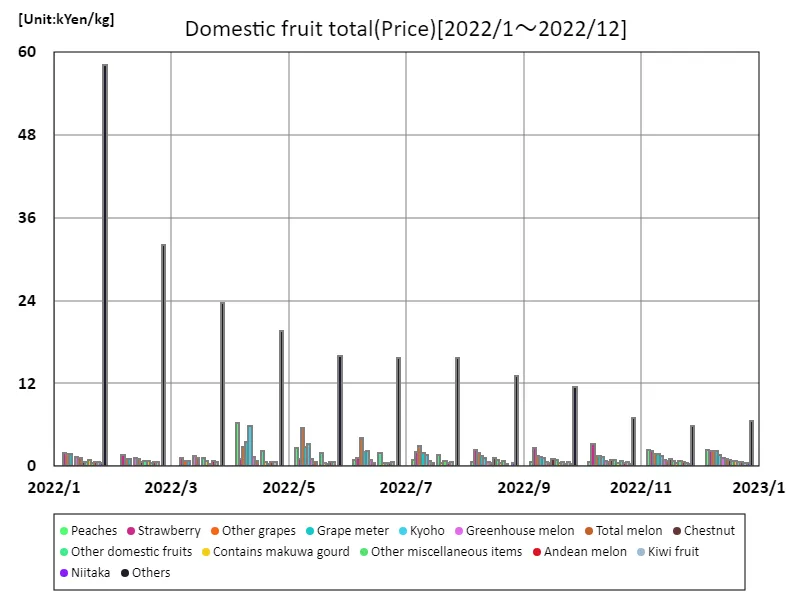Abstract
Regarding central wholesale of fruit in Japanese agriculture, the latest data from December 2022 shows that the total volume of domestically produced fruit is 141kt, which can be said to be a relatively stable amount. On the other hand, the total price of domestically produced fruit was 61.3 million yen, which also shows a stable trend. In terms of price, peaches were the most expensive at 2,310 yen/kg, indicating that they are traded at a higher price than other fruits. This data indicates that demand for domestically produced fruits is stable, with peaches in particular being traded at high prices. While demand is expected to remain stable in the future, there may also be an increase in demand for high value-added fruits.
Total quantity of domestically produced fruit.
Looking at data from January 2006 to December 2022, there is some fluctuation in the quantity of domestically produced fruit in Japanese agriculture. After reaching a peak of 294kt in December 2007, it has been on a downward trend ever since, falling to a level of 48% as of December 2022. This trend indicates that domestic fruit production has declined significantly from its peak. This may be due to structural changes in agriculture and external factors. For example, factors such as a decrease in demand for domestically produced fruit and conversion of agricultural land may be contributing factors. It is also possible that production of certain fruits that are in demand may be increasing even as the decline continues. Taking these factors into consideration, while domestic fruit production is declining, it is necessary to adjust production in response to demand and develop new demand.


The maximum is 294kt[2007年12月] of Domestic fruit total, and the current value is about 48%
Total price of domestically produced fruit.
Regarding the price of fruit in Japanese agriculture, the latest data from December 2022 shows that the overall market total price of domestically produced fruit reached a record high of 89.9 million yen. Past trends show that prices tend to vary by prefecture. In some areas, high prices may be maintained due to increased demand or the presence of specialty products. Other factors that may be contributing to the increase in prices include the growing demand for domestically produced fruits and increased added value due to improved quality. Given these trends, it appears that Japan’s fruit market is growing due to increased demand and growing health consciousness among consumers. While demand is expected to continue to expand in the future, information sharing and collaboration between producers and consumers will become even more important.


The maximum is 89.9Myen[2006年12月] of Domestic fruit total, and the current value is about 68.2%
Price of domestic fruit meters.
When examining data on the prices of domestically produced fruits in Japanese agriculture from January 2006 to December 2022, prices fluctuate. In January 2022, the price of tofu hit a record high of 51,700 yen per kg, but has since continued to decline and is currently at 6.53% of its peak price. This trend shows that fruit prices are influenced by various factors, including seasonality and fluctuations in demand. The reasons behind the particular rise and subsequent fall in the price of salmon may include changes in climatic conditions, production volume, and demand. In addition, the price fluctuation range and trends vary for each fruit, suggesting that the characteristics and market needs of each fruit have a significant influence on price formation. Prices are expected to fluctuate depending on changes in demand and trends in production conditions in the future, so agricultural producers and consumers will need to keep a close eye on market trends.


The maximum is 51.7kYen/kg[2022年1月] of Father, and the current value is about 6.53%
Domestic fruit meter prices (latest).
Looking at price data for domestically produced fruits in Japanese agriculture from January 2022 to December 2022, the price of peaches is particularly noteworthy. In April 2022, it hit a high of 6,340 yen per kg, but has since fallen and is currently at 36.5% of its peak price. This trend is driven by seasonal influences, fluctuations in demand and changes in production volumes. Peach prices peaked in April, likely toward the end of the harvest season, and a supply-demand imbalance may have pushed up prices. The subsequent decline in prices is likely due to a seasonal drop in demand and/or increased supply on the market. As agricultural fruit prices are constantly fluctuating, producers and consumers must keep a close eye on market trends and make transactions while taking into account the balance between supply and demand.


The maximum is 6.34kYen/kg[2022年4月] of Peaches, and the current value is about 36.5%



Comments